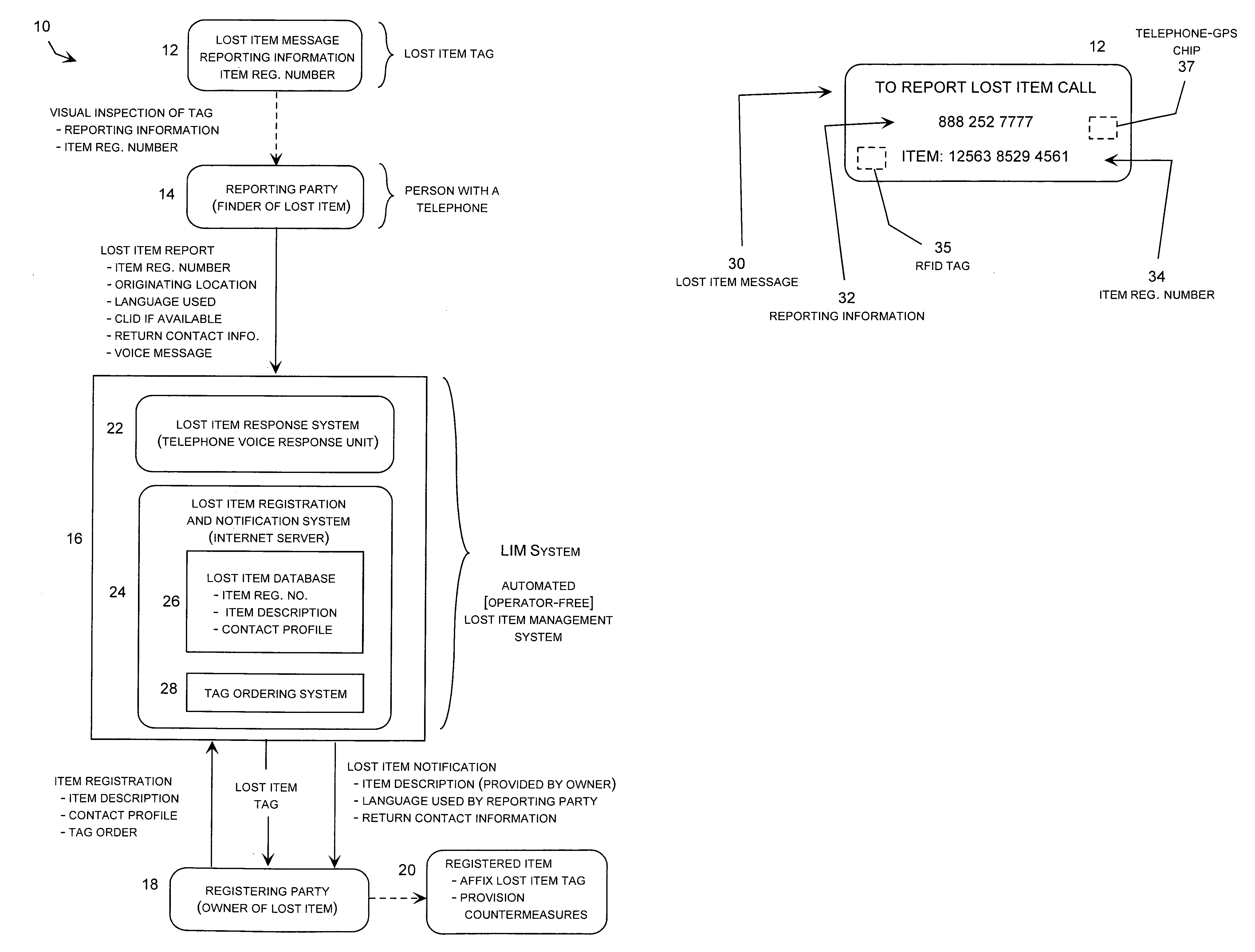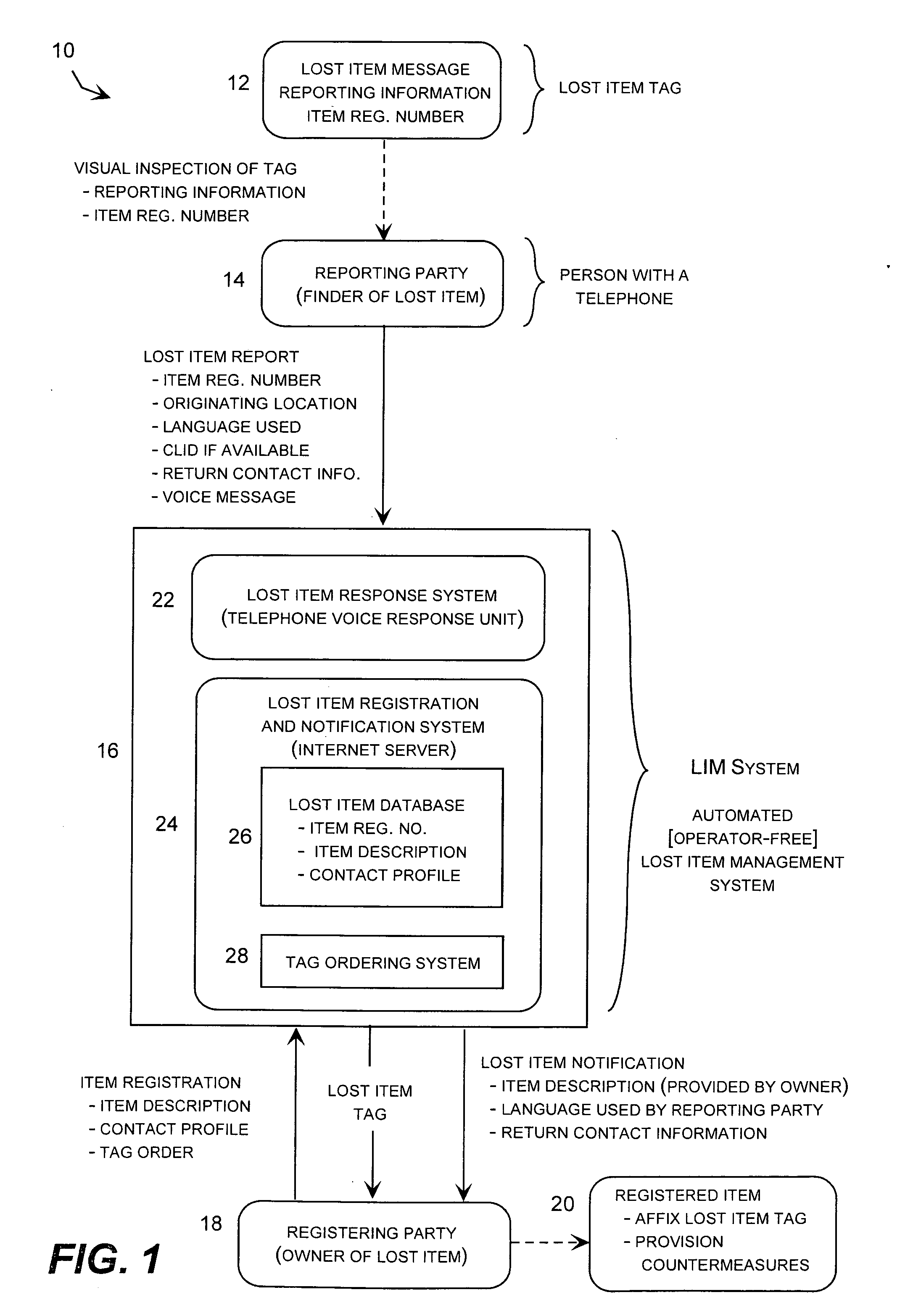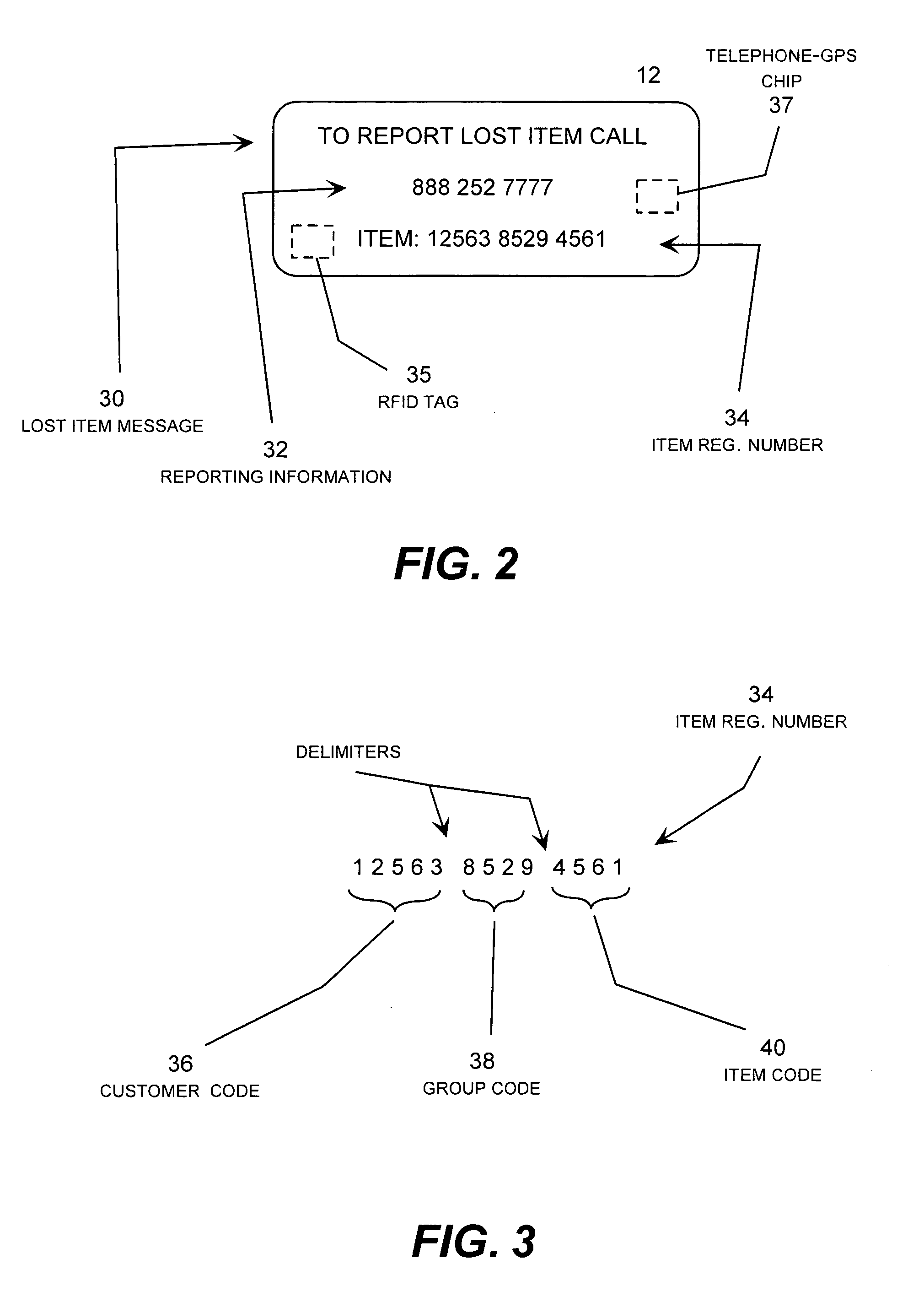Lost item notification and recovery system
a technology for notified and recovered items, applied in the field of lostandfound systems, can solve the problems of insufficient sophisticated database functionality, low efficiency, and time-consuming, and achieve the effect of reducing the need for human involvemen
- Summary
- Abstract
- Description
- Claims
- Application Information
AI Technical Summary
Benefits of technology
Problems solved by technology
Method used
Image
Examples
Embodiment Construction
[0029]The present invention may be embodied in a largely or totally automated lost item notification and recovery (LINR) system that avoids language barriers by providing a short description of the item entered by the subscriber and stored in a database in any lost item notification message communicated to the subscriber concerning the item. The lost item notification message may also include an indication of the language used by the reporting party when placing the lost item report, and may also include an indication of the geographic location where the lost item report originated. The LINR system may also activate pre-defined countermeasures associated with the lost item once the item has been reported lost and implement a reward system providing compensation to the reporting party or others upon successful return of the lost item.
[0030]The methodology of the LINR system may be implemented in a number of different ways, including an operated-assisted system, a fully automated syst...
PUM
 Login to View More
Login to View More Abstract
Description
Claims
Application Information
 Login to View More
Login to View More - R&D
- Intellectual Property
- Life Sciences
- Materials
- Tech Scout
- Unparalleled Data Quality
- Higher Quality Content
- 60% Fewer Hallucinations
Browse by: Latest US Patents, China's latest patents, Technical Efficacy Thesaurus, Application Domain, Technology Topic, Popular Technical Reports.
© 2025 PatSnap. All rights reserved.Legal|Privacy policy|Modern Slavery Act Transparency Statement|Sitemap|About US| Contact US: help@patsnap.com



